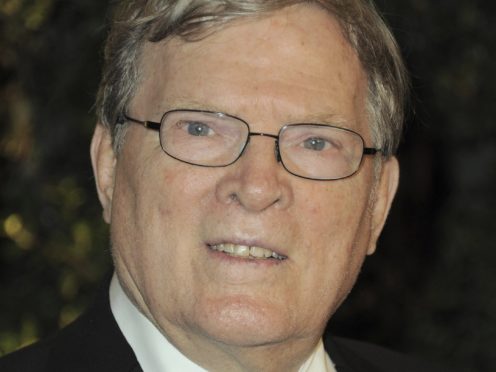Oscar-winning documentary maker DA Pennebaker has died at the age of 94.
The film-maker, who received an honorary Academy Award in 2013, died of natural causes at his home in Long Island, his son Frazer Pennebaker said in an email.
Pennebaker helped popularise the naturistic style known as cinema verite and made influential movies such as as Don’t Look Back and The War Room, which captured the spin behind Bill Clinton’s 1992 presidential campaign.

As an assistant to pioneer Robert Drew, Pennebaker helped invent the modern political documentary Primary, a revelatory account of John F Kennedy’s 1960 victory in Wisconsin over fellow Democratic presidential candidate Hubert Humphrey.
He on went to make or assist on dozens of films, from an early look at Jane Fonda and an Emmy-nominated portrait of Elaine Stritch to a documentary about a contentious debate between Norman Mailer and a panel of feminists.
Widely admired and emulated, Pennebaker was blessed with patience, sympathy, curiosity, the journalist’s art of setting his subjects at ease, the novelist’s knack for finding the revealing detail and the photographer’s eye for compelling faces and images.
When reducing vast amounts of raw footage into a finished film, Pennebaker said: “The one barometer I believe in is boredom. The minute people start to lose interest, that’s it.”
Pennebaker parted from Drew in the mid-’60s and became a top film-maker in his own right with the 1967 release Don’t Look Back, among the first rock documentaries to receive serious critical attention.
It follows a young Bob Dylan on a 1965 tour of England, featuring Joan Baez, Donovan, Allen Ginsberg and others.
Pennebaker continued to work with Dylan after Don’t Look Back and was on hand for his raucous European tour in 1966.

But Dylan was reportedly unsatisfied with Pennebaker’s cut and reworked the film himself. Some of the footage was released as Eat the Document while other parts were used by Martin Scorsese for No Direction Home, a Dylan documentary released in 2006.
After Dylan, Pennebaker again recorded a musical landmark with Monterey Pop, a documentary of the 1967 California gathering that was rock’s first major festival and featured such current and future stars as Otis Redding, Jimi Hendrix and Janis Joplin.
Pennebaker not only captured some of the rock era’s most dynamic performances but the crowds who took them in.
He also made a documentary about a 1969 concert in Toronto with John Lennon and a pickup band featuring Eric Clapton. He made films about performers he admired and some he came to enjoy, like Depeche Mode, whose dedicated fans warmed him to their music.
In the 1990s, Pennebaker returned to politics with The War Room, co-directed by Pennebaker and his wife, Chris Hegedus.
Pennebaker was a longtime resident of Sag Harbor, an oceanside community on the eastern end of Long Island.
